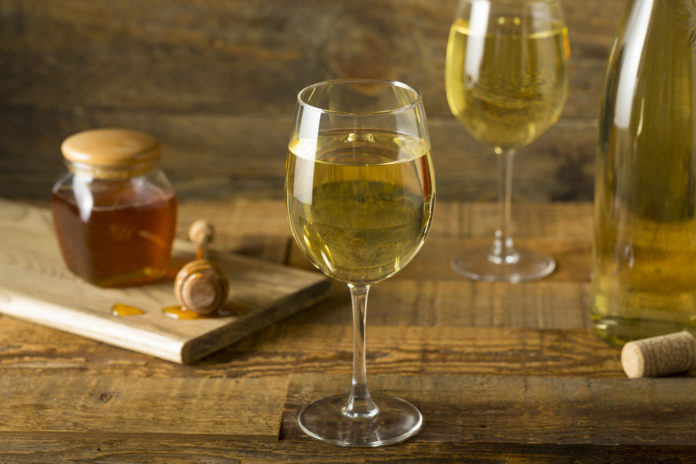Written by Carey Rambo Executive Chef at Sewickley Hotel
Oh MEAD, Oh MY!
What is a mead, you might ask? Well, mead, it so happens, is a glorious alcoholic beverage given to us by the Greek Gods, who believed that it was the dew falling from the Heavens, and that the bees were then sent to collect it. A drink that was sometimes called nectar or ambrosia, and is often associated with the Vikings, Egyptians, and Mayans, and they’re all pretty cool, right? That means that their drink of choice has to be pretty cool, too.
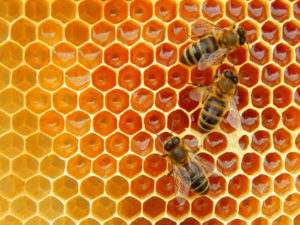 According to history, mead is an ancient brew that was discovered by chance by a group of foragers some 4,000 years ago that drank some water from a flooded bee hive, and it just so happens that the water they had drank was fermented with the hive’s honey. Not all heroes wear capes, folks. Some are just disguised as thirsty medieval foragers! It has since then become the drink of many legends and lore from just about every culture in history, and yet it seems to have been forgotten over time.
According to history, mead is an ancient brew that was discovered by chance by a group of foragers some 4,000 years ago that drank some water from a flooded bee hive, and it just so happens that the water they had drank was fermented with the hive’s honey. Not all heroes wear capes, folks. Some are just disguised as thirsty medieval foragers! It has since then become the drink of many legends and lore from just about every culture in history, and yet it seems to have been forgotten over time.
 Do not fret though, because mead brewing and drinking has begun to make a resurgence in the past few years as craft brewing has taken off and more people are home brewing. Even wineries are beginning to branch out and dabble in mead making. Mead is often described as “honey wine”, even though it isn’t quite wine, but it is close. Wine is made with fermented grapes, water and yeast, while mead is fermented honey, water and yeast. There are also almost as many types of mead as there are stories about its past. There are melomels (made with fruit), cysers (made with apples or apple juice), hydromels (weak or watered-down brews), oxymels (made with wine vinegar), pyments (made with grape or by adding grape juices), and many more. When I make mine, I tend to lean towards the melomel or cyser categories as they tend to be a bit fruitier and sweeter, and then add some sort of medicinal herbs or flowers for health.
Do not fret though, because mead brewing and drinking has begun to make a resurgence in the past few years as craft brewing has taken off and more people are home brewing. Even wineries are beginning to branch out and dabble in mead making. Mead is often described as “honey wine”, even though it isn’t quite wine, but it is close. Wine is made with fermented grapes, water and yeast, while mead is fermented honey, water and yeast. There are also almost as many types of mead as there are stories about its past. There are melomels (made with fruit), cysers (made with apples or apple juice), hydromels (weak or watered-down brews), oxymels (made with wine vinegar), pyments (made with grape or by adding grape juices), and many more. When I make mine, I tend to lean towards the melomel or cyser categories as they tend to be a bit fruitier and sweeter, and then add some sort of medicinal herbs or flowers for health.
Speaking of making your own mead, it can be as simple or as scientific as you want to 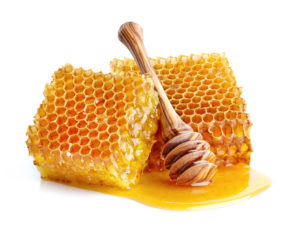 make it. When I brew mine, I use primitive fermenting methods, gather what I can from foraging- including my waters which come from a natural spring an hour away from my home, and use foraged sources of yeast as opposed to using commercial yeast strains. Usually the only ingredient that I purchase is the raw honey since I don’t have any hives to swipe honey from in my back yard. My final products may not be as “refined” tasting to some folks, because I don’t use stabilizers, fermentation aids, or yeast nutrients, but these are probably a bit closer in taste to the medieval brews that the Vikings enjoyed. However, I have made a few completely foraged brews that, sipped side by side with some of the winery produced meads I’ve collected, you can’t tell that I’ve strayed completely from the “book methods” (as I call them) of mead making.
make it. When I brew mine, I use primitive fermenting methods, gather what I can from foraging- including my waters which come from a natural spring an hour away from my home, and use foraged sources of yeast as opposed to using commercial yeast strains. Usually the only ingredient that I purchase is the raw honey since I don’t have any hives to swipe honey from in my back yard. My final products may not be as “refined” tasting to some folks, because I don’t use stabilizers, fermentation aids, or yeast nutrients, but these are probably a bit closer in taste to the medieval brews that the Vikings enjoyed. However, I have made a few completely foraged brews that, sipped side by side with some of the winery produced meads I’ve collected, you can’t tell that I’ve strayed completely from the “book methods” (as I call them) of mead making.
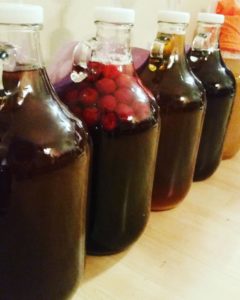 Thinking about trying your hand at mead? Yes, you should! Some of the very basic equipment you will need is a 1-gallon glass jug (or 5 gallon if you want to make a bigger batch), a 5-gallon food grade bucket, an air lock, cheese cloth for straining fruits and herbs, empty wine bottles, and corks. The best way to get all of the important pieces of equipment, however, is to purchase a basic beginner’s kit and save yourself the headache of figuring out what you need. A quick internet search will lead you to all of the options for them, and if this is your very first venture into mead making, try to find a deluxe kit that contains the nutrients, stabilizers, and sanitizers that you need as well. They will often include detailed instructions to help you with your first batch. As far as your ingredients go, quality, quality, quality. A mead is only as good as its ingredients! The fresher the better, organic is a must for any fruits and herbs, raw and local honey is the best (Star Thistle and Goldenrod are my two favorites), and water should be spring water or at the very least, chlorine free- the chlorine will kill your yeast strains so you won’t get to see fermentation.
Thinking about trying your hand at mead? Yes, you should! Some of the very basic equipment you will need is a 1-gallon glass jug (or 5 gallon if you want to make a bigger batch), a 5-gallon food grade bucket, an air lock, cheese cloth for straining fruits and herbs, empty wine bottles, and corks. The best way to get all of the important pieces of equipment, however, is to purchase a basic beginner’s kit and save yourself the headache of figuring out what you need. A quick internet search will lead you to all of the options for them, and if this is your very first venture into mead making, try to find a deluxe kit that contains the nutrients, stabilizers, and sanitizers that you need as well. They will often include detailed instructions to help you with your first batch. As far as your ingredients go, quality, quality, quality. A mead is only as good as its ingredients! The fresher the better, organic is a must for any fruits and herbs, raw and local honey is the best (Star Thistle and Goldenrod are my two favorites), and water should be spring water or at the very least, chlorine free- the chlorine will kill your yeast strains so you won’t get to see fermentation.
So, to keep this short and sweet, if you’ve ever wanted to try to make your own mead at 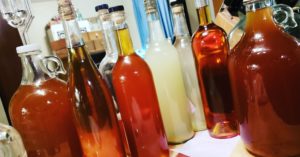 home, go ahead and give it a shot. Or maybe you want to try something new and do some market research from one of the wineries that are offering their new meads- do it! Get out there and enjoy a glass of mead like our Viking friends of the past. And don’t forget to raise your glass with a happy and hearty “Skol!” to your group when you do.
home, go ahead and give it a shot. Or maybe you want to try something new and do some market research from one of the wineries that are offering their new meads- do it! Get out there and enjoy a glass of mead like our Viking friends of the past. And don’t forget to raise your glass with a happy and hearty “Skol!” to your group when you do.
Until next time, Skol, friends!
Here’s my go-to resources for almost all of my brewing projects:
Northernbrewer.com
Homebrewohio.com Ebeehoney.com
And some of my favorite books to reference:
“The Wildcrafting Brewer” and “The New Wildcrafted Cuisine”,
Pascal Baudar
“Make Mead Like a Viking: Traditional Techniques for Brewing Natural, Wild-Fermented Honey-Based Wines and Beers”, Jereme Zimmerman



